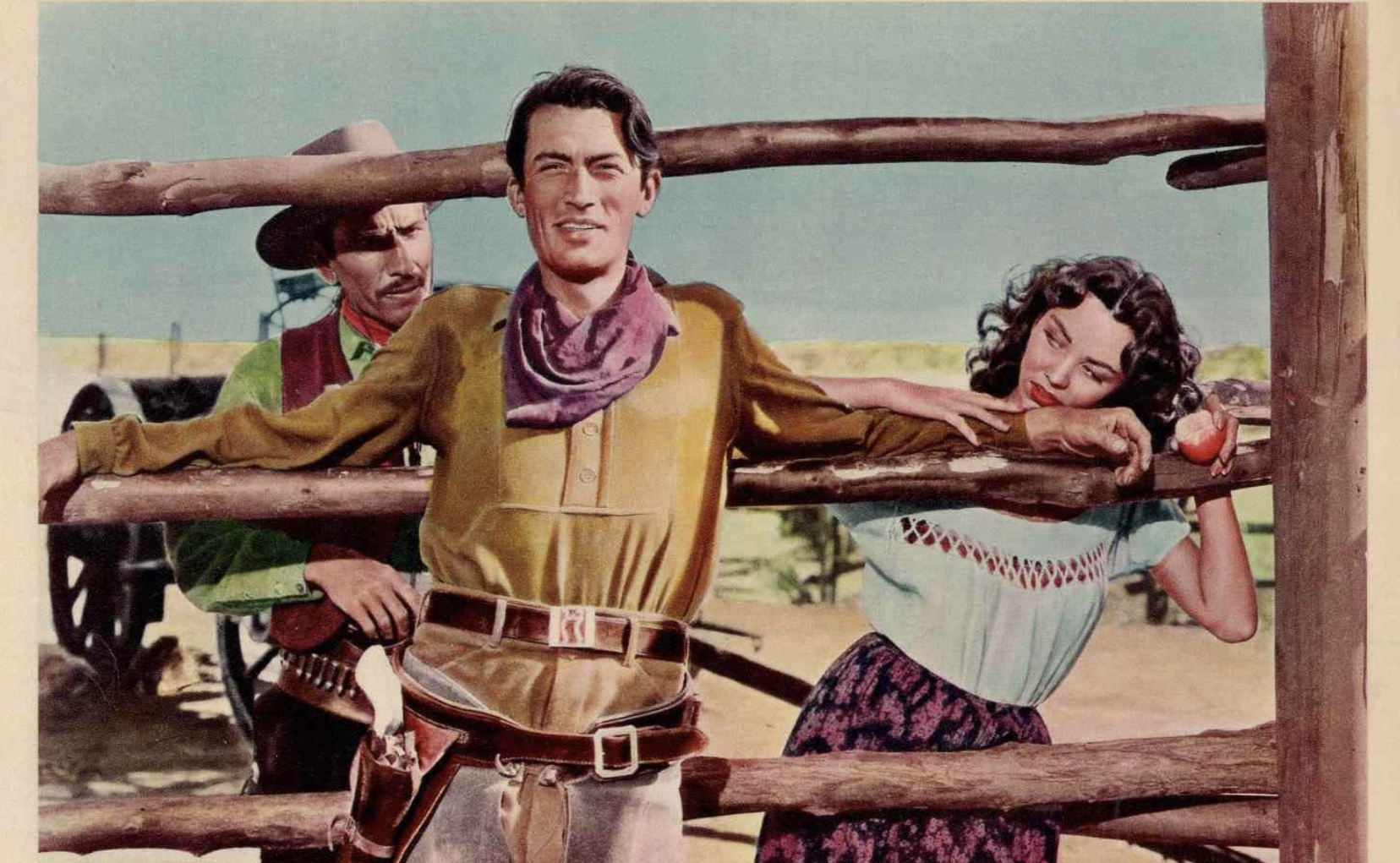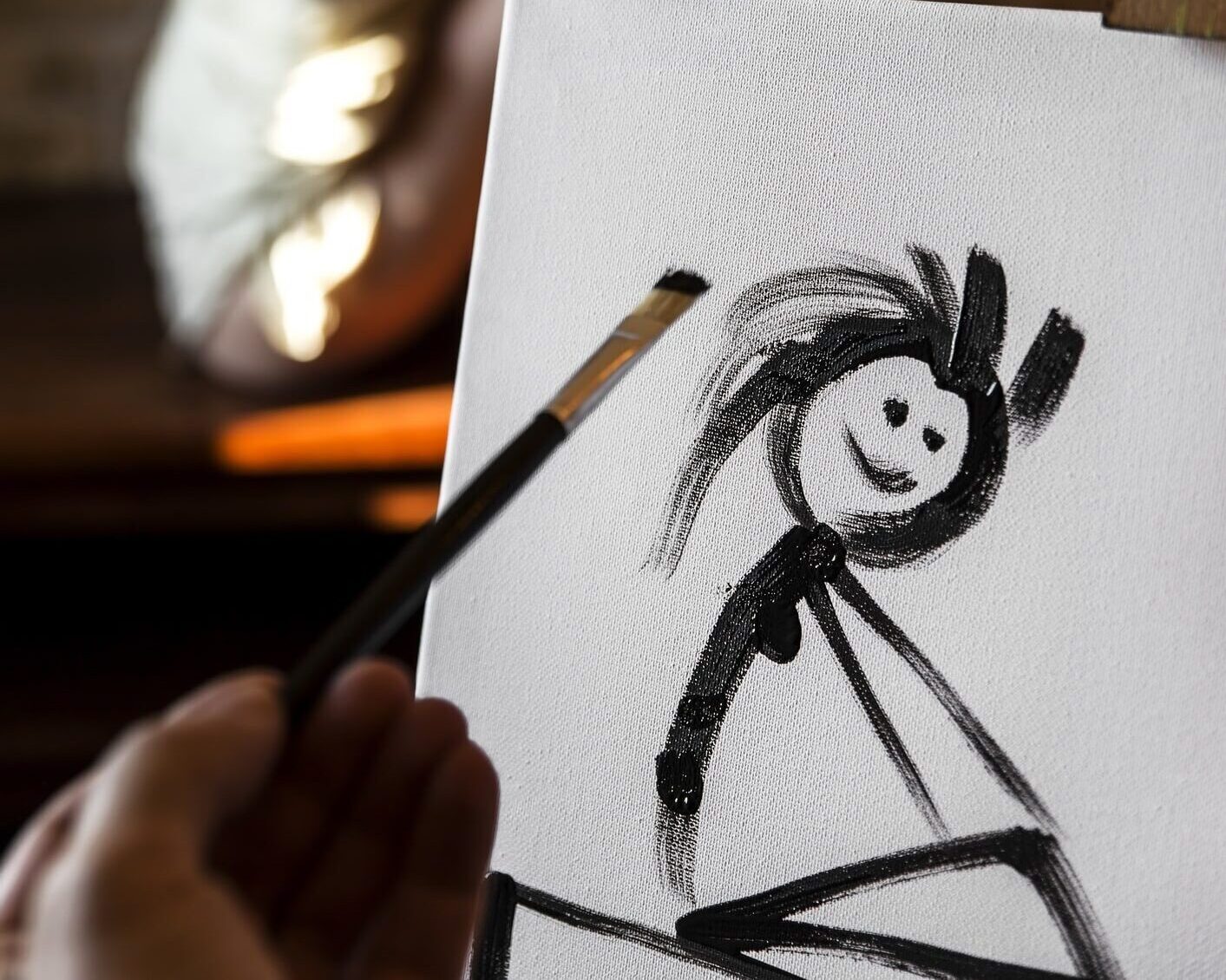When we reflect on the coronavirus pandemic, with its waves of shutdowns, stay-at-home orders, and social-distancing decrees, will we ask ourselves whether this was the point at which we lost our capacity to behave collectively?
Perhaps at no time in American history have so many people been so dramatically torn asunder from one another. Activities once undertaken unthinkingly as part of large crowds—from attending a concert to shopping for produce to standing in line to vote—were done remotely, virtually, or, as in that most wearisome expression, “safely,” which, more often than not, meant in the company of as few people as possible.
Of course, thanks to assorted interventions on the part of both the Trump and Biden administrations, our suddenly austere, straitened circumstances were not primarily economic but were instead interpersonal. We were asked to log onto online worship services, in which the satisfactions of congregational life were replaced by the desolation of solitary screen time, and during the holidays we were implored to limit the number of family members with whom we might celebrate. Even solemn affairs of state—say, the address of an American president to Congress or the funeral for a member of the British royal family—became parodies of social distancing, with solitary figures scattered throughout cavernous spaces.
Yet throughout it all mass gatherings never really left our consciousness—not in real life, of course, but in the movie palaces of our dreams.
Just ask the members of the Academy of Motion Picture Arts and Sciences, which has had a long and consistent record of honoring the good, old-fashioned screen epic: films that, in their often romantic, melodramatic depiction of major historical events, their marshaling of hordes of extras, their execution of complex battle or crowd scenes, or their deployment of sweeping, majestic camerawork bear the hallmarks of cinematic gigantism. Exemplars of the form stretch as far back as the silent days, including D. W. Griffith’s Orphans of the Storm (1921), Cecil B. DeMille’s The Ten Commandments (1923), and King Vidor’s The Big Parade (1925). During the talking era, the tradition was perpetuated thanks to moguls such as David O. Selznick, who steered to port super-epics on the order of Gone with the Wind (1939) and Duel in the Sun (1946), and it persisted as late as James Cameron’s Titanic (1997). The Oscar ceremony that showered the last film with prizes drew more viewers (57 million) than any other before or since.
The Oscars are considered by many to be silly, superficial affairs, and with good reason, but every so often Oscar voters get something big right—and, in this case, literally big. They may not know art when they see it, but they clearly have a sense of the ingenuity, coordination, and sheer effort needed to realize large-scale spectacles.
Like all genres, the epic’s popularity has ebbed and flowed. Throughout the 1940s, despite the example of Gone with the Wind, small, character-driven dramas—among them masterpieces such as John Ford’s How Green Was My Valley (1941), Leo McCarey’s Going My Way (1944), and Elia Kazan’s Gentleman’s Agreement (1947)—consistently dominated the Best Picture picks. In the next decade, though, the epic underwent a resurgence: as studios doubled down on grandiose productions that had no equivalent on the then-booming medium of television, the Academy began to regard the form with renewed appreciation.
Between 1950 and 1965, at least eight films that could, broadly speaking, be considered epics won Best Picture: DeMille—the man who during the silent era helped popularize the epic with films like The Ten Commandments—was feted for his penultimate film, the sweet-natured, amply proportioned portrait of a traveling circus The Greatest Show on Earth (1952). Other Best Picture winners of the period—including Michael Anderson’s Around the World in 80 Days (1956), William Wyler’s Ben-Hur (1959), and, especially, David Lean’s The Bridge on the River Kwai (1957) and Lawrence of Arabia (1962)—fit comfortably in our definition of the form. Leading directors made contributions to the genre almost as a rite of passage; even Stanley Kubrick was tapped to contribute to the form with 1960’s Spartacus, starring Kirk Douglas.
Indeed, films from that era belonging to other genres—such as the musicals Gigi (1958), West Side Story (1961), and The Sound of Music (1965)—had a certain hulking, inflated quality that made them kissing cousins to the epic. While the musicals of the 1930s often felt flinty and dashed-off—in the great Astaire-Rogers musicals, the camera often just sits there while Fred and Ginger do their thing—those of the 1950s and ’60s came with widescreen compositions, elaborate set design or location shooting, and a general sense of grandiosity. “Climb ev’ry mountain,” they sang in The Sound of Music—and director Robert Wise and his camera crew did so.
Yet there were dents in the epic’s armor. A heap of bad publicity accompanied the 1963 release of Joseph L. Mankiewicz’s Cleopatra, starring Elizabeth Taylor and Richard Burton, and by the end of the decade, the epic looked to have exhausted itself. At the 1970 Academy Awards, honoring the previous year’s releases, John Schlesinger’s defiantly small-scale character study Midnight Cowboy won Best Picture, beating films that, a few years earlier, might have walked away with top honors: the grand historical drama Anne of the Thousand Days and the grandly realized musical Hello, Dolly! The great American independent filmmaker Bob Rafelson has sometimes cited the colossally unsuccessful—though not at all without merit—Blake Edwards-directed musical Darling Lili, starring the charmingly antiquated duo of Julie Andrews and Rock Hudson, as just the sort of film that Hollywood continued to churn out long after its sell-by date.
Darling Lili had plenty of company: David Lean’s Ryan’s Daughter (1970), the tiny tale of a romantic triangle amplified by its intoxicating Irish setting and rococo score (by—who else?—Maurice Jarre), was considered a big-league fiasco, and other films of the period that bore the hallmarks of the form were met either with shrugs (Franklin J. Schaffner’s 1971 historical drama Nicholas and Alexandra) or outright hostility (Bernardo Bertolucci’s 1976 extended exegesis on Marxism, Novecento). That’s more than can be said for the reception accorded Michael Cimino’s notorious 1980 debacle Heaven’s Gate, which used a $44 million budget, extraordinary set and costume design, and untold numbers of extras and horses to recreate the Johnson County War of late 19th-century Wyoming but whose unfathomable financial losses caused Hollywood to cool on oversized filmmaking—for a year or two, anyway.
In truth, the movie business never quite lost faith in the epic. The Academy’s appetite quickly returned after Heaven’s Gate: Richard Attenborough’s impressive 1982 biopic Gandhi—whose staggering set pieces include a convincing attempt at recreating Gandhi’s funeral that won inclusion in the Guinness Book of World Records for most extras (300,000)—won Best Picture over Steven Spielberg’s E.T. And even during the 1970s, the decade most hostile to the traditional epic, the fundamentals of the form—large casts, grand set pieces, a general sense of sweep—cropped up in such unlikely films as Robert Altman’s Nashville (1975); the multi-vehicle traffic accident that occurs near the start of this hectic, proudly unkempt, gloriously bounteous film is as impressive as, though considerably less high-flown than, the demolition of the bridge in The Bridge on the River Kwai.
The epic’s official comeback, though, was Bertolucci’s 1987 masterpiece The Last Emperor, a massive, artful super-production that depicted, in scenes partly shot in the Forbidden City, the enthronement, exile, and demise of Puyi. The subsequent success enjoyed by Glory (1989), Dances with Wolves (1990), Braveheart (1995), and The English Patient (1996) were opening acts for the climactic triumph of Titanic, an awkwardly directed, inadequately written, and often incompetently acted film whose sheer heft, in the end, had to be acknowledged. (As was said of Willy Loman: “Attention must be paid.”)
Although epics in the traditional mold of Lawrence of Arabia or Titanic have become rarer and rarer, and religious epics (like The Ten Commandments or Ben-Hur) almost unheard of, there remain serious contemporary filmmakers with a taste for large canvases, such as Spike Lee and Paul Thomas Anderson. And the current vogue for big, fat comic book movies conceived on grand terms suggests a nagging audience taste for lavishness and extravagance. Zack Snyder’s Justice League may be the Duel in the Sun of the DC Extended Universe.
Is the resilience of the epic simply a reflection of that all-American weakness for large things of all sorts—the same instinct that contributes to the enduring popularity of the Big Mac, the McMansion, and the motorhome? Or, as counterintuitive as it may seem to the delicate sensibilities of serious filmgoers, are Oscar voters and others onto something in their persistent veneration of films that take a long time, and use every inch of the movie screen, to tell their stories?
In fact, the epic will always appeal to audiences’ instinctive appreciation of spectacle—the part of our brains that are stimulated when we watch something that appears effortless but which we know required much planning, coordination, and luck. For example, the T. E. Lawrence-led attack on the port of Aqaba in Lean’s Lawrence of Arabia is so impressive, so complicated, and with so many moving parts that it almost invites questions about its making as we are watching it. Looking at the scene, we wonder: Just where is the camera as those horses and camels are galloping? Did Lean know that the animals would kick up just enough dust to give the scene energy but not so much dust to obscure the clear, clean lines of action? Who was telling the riders where to go and when to stop?
The immortal chariot race in Wyler’s Ben-Hur has a similar quality of kinesis combined with danger: the roaring horses, the chariot wheels blurring into each other, the circular action of the race—it all looks so difficult to manage, yet there it is on the screen.
Watching the best epics is a bit like watching the Rockettes: we are impressed by what we see almost to the point of distraction, and this is true even of scenes less visceral than those in Lawrence or Ben-Hur. At the beginning of Heaven’s Gate, the camera ingratiates itself with the top-hat-bedecked members of the class of 1870 at Harvard College as they hurriedly cram into the hall where commencement exercises are underway. First at eye level with the crowd, the camera cranes upward as it advances past and over the heads of the students, who scatter into place. The shot finally fixes on the Reverend Doctor (Joseph Cotten), who, in the distance, is seen making his way to a podium above the assembled graduates. We are aware of the camera because it shakes slightly as it moves in closer and closer to Cotten, who, finally, starts to speak: “My friends, if it be not a mere farce you are enacting in these sacred valedictory rights…” The thrill is in observing so many disparate elements—the extras pouring in, the timing of Cotten’s walk entrance, the camera’s journey from outside to inside and from long shot to closer shot—fall into place with apparent ease.
Many epics make a point of showing off their very size: in a justly famous shot in Gone with the Wind, the camera starts on Vivien Leigh’s Scarlett O’Hara as she surveys the Civil War’s human toll in a rail yard in Atlanta. Then the camera retreats, moving upward to reveal an almost unbelievable number of wounded and writhing men. The scene looks as though it might stretch to infinity; we can pick out Scarlett only by her hat and fluttering dress. A similar shift from small to large occurs in one of the loveliest moments in Terrence Malick’s romance among the wheat fields, Days of Heaven (1978): After a farmhand (Jackie Shultis) bids farewell to her young friend (Linda Manz), she rushes off to catch the departing train. The camera, which had opened with the friends in a tight two-shot, follows the farmhand as she runs off, expanding the field of vision to include the surge of other figures joining her in hopping aboard the train.
In the best epics, one has the sense of the individual being placed within the larger context of the world—the quality that King Vidor was aiming for in his extraordinary film The Crowd (1928), which includes a much-imitated sequence in which the camera crawls up the side of a building, glides into a window, cruises over symmetrically positioned desks, and finally settles on a single individual: “I wanted to pick out one floor of a tall building and one window and then one desk and one man,” Vidor once said.
Sometimes we just have to stand back and appreciate the stateliness of such scenes, and dances and balls fit as easily into epics as battles and brawls. In Otto Preminger’s 1963 film The Cardinal, a priest who has developed doubts about his calling (Tom Tryon) attends a Viennese ball in the company of a lovely young woman (Romy Schneider). At one point during the ball, Schneider places her gloved hand on Tryon’s shoulder, the signal for the two to join the waltzing couples encircling them. As they dance into the distance, the camera shifts from a close view of Tryon and Schneider to a wider, higher look at all of the gracefully spinning couples.
Such scenes can have an impersonal quality. Perhaps none can compete with the expressiveness of Charlie Chaplin smiling in the final moments of City Lights (1931) or Myrna Loy and Fredric March tiptoeing towards each other and then embracing near the start of The Best Years of Our Lives (1946)—moments of profound emotion that required no extras, no horses, no fancy crane shots.
Yet in a society that had become atomized before the pandemic, and that became downright hermetic in the age of social-distancing and mask-wearing, the screen epic reminds us that human beings are inclined to be among each other—not just among friends and families but the wider community of man. It is telling that so many epics are devoted to historical subjects. It is almost as though we couldn’t accept an intimate or low-budgeted film about imperial China—it must be as grand as The Last Emperor. More modest historical films often feel incomplete, insufficient; they demand scope. We intuitively understand that we cannot be part of history unless we are part of it together—part of a crowd, an infantry division, a graduating class, or even a protest.
These days, perhaps we just like to see large numbers of people in nearly any context. We yearn to be part of—to see pictures of—humanity in the collective sense, not just in screen epics but in all films that give a sense of the energy of being among a teeming throng: think of Cary Grant walking into a Manhattan sidewalk buzzing with businessmen in Hitchcock’s North by Northwest (1959), or villagers in India chanting the tones learned from alien visitors in Spielberg’s Close Encounters of the Third Kind (1977), or the thousands who gathered to hear the Rolling Stones in Hal Ashby’s concert film Let’s Spend the Night Together (1982). As we emerge from the pandemic, there will be those among us who continue to look longingly at screen epics and their casts of thousands.
Peter Tonguette’s work frequently appears in the Wall Street Journal, Washington Examiner, and National Review.














